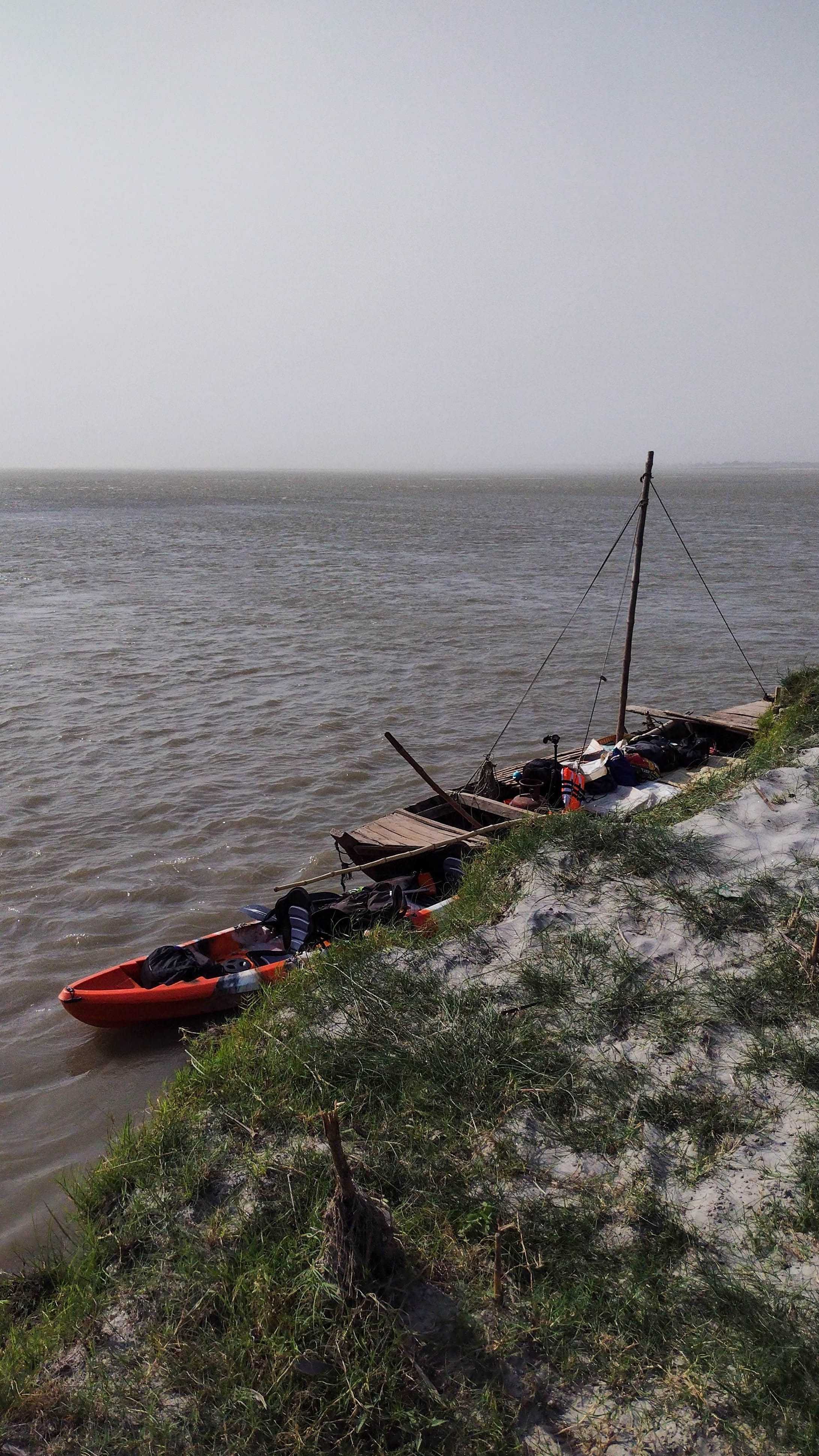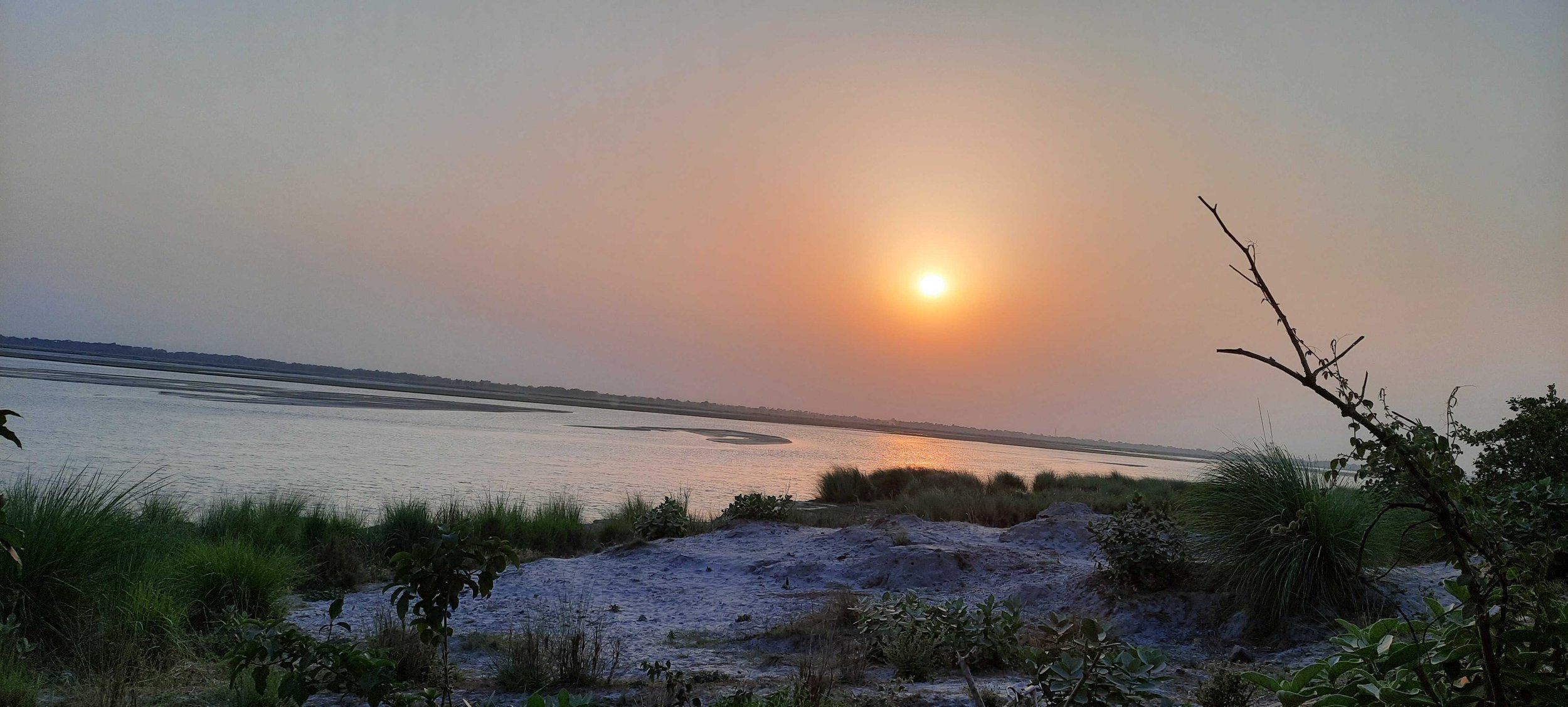Field notes from Bihar, 2023.
As the sun set after another day of fieldwork, we returned to our accommodations. I recounted the day's events while transferring media. We spent the morning in the field, followed by a quick lunch, and then returned to the field. Later in the evening, we prepared for an upcoming workshop with the forest department. Our days in sunny Bihar this February had been exciting.
Our day was indeed full of action, conducting aerial transects to estimate gharials at our field sites along the riverbanks of the Gandak. We scanned the waters intently, hoping to catch a glimpse of life beneath the surface. The splashes and movements in the water kept us on edge, wondering if it was a dolphin or something else entirely. Moving to another site on the north bank, we got started on our drone transects, and that's when things took an unexpected turn – a buffalo nearly charged us! The adrenaline rush was real, but we pushed through, even laughing, completing our tasks and moving on to another location to observe dolphins. During our time on this site, we counted four gharials and a solitary dolphin, while also spotting an enigmatic stork.
Evading a curious buffalo on field-site.
After wrapping up our fieldwork, we returned to charge our drones and have a quick lunch. Our tasks for the day weren't done yet – we were headed to another site near our accommodations for mapping and conducting bathymetry tests soon after. Bathymetry tests involve measuring the depth of water bodies, in this case, of the river. By initiating the flying of the drones over the same river channel, our objective was to ascertain whether RGB drones could provide any information regarding the river’s bathymetry.
Once the media we had gathered were transferred, we set off for our next site. Though the plan didn't unfold exactly as anticipated, the unexpected offered new opportunities. The survey boat was unable to go around the sandbar as intended. Instead, we flew the drone following the boat's path to take pictures at frequent intervals along the same route. This was a way to conduct simultaneous surveys using two different techniques: not only exploring the presence of dolphins but also comparing methods used.
Survey boat as seen from the aerial drone.
The integration of drone technology has repeatedly demonstrated its potential in conservation efforts. Drones' capabilities to swiftly and comprehensively survey areas can reshape how researchers and conservationists approach their work. High-resolution imagery captured by drones works to bridge the gap between traditional survey methods and modern technology, enhancing data accuracy and efficiency. For those of us fortunate enough to witness the impact of drones on conservation firsthand, tangible feelings of excitement and curiosity emerge.
It was during this flight that the true excitement around drones became evident. As the drone took to the sky, a group of children gathered around, captivated by the spectacle. Their excitement was contagious, as they curiously identified the drone and spun imaginative stories about its purpose, whilst mistaking my hand-held camera for a CCTV! In a sense these robotic ‘toys’ facilitated a more accessible dialogue about wildlife.
Children taking turns viewing from a pair of binoculars, whilst the project team conducts a mapping mission from the banks of the river.
The evening was one of light chatter and marvelling at the rich diversity of this region. A glimpse of the stunning illustrations of local wildlife, compiled by Tarun Nair as part of his presentation to the forest department, served as a reminder of the beauty we were working to protect.
The excitement and curiosity surrounding drone technology for conservation are undeniable. With each passing day, more researchers and conservationists turn to drones, gaining insights into our natural world. Being a part of this field is a privilege, and I'm excited about the future and the positive impact drones can have on conservation.











